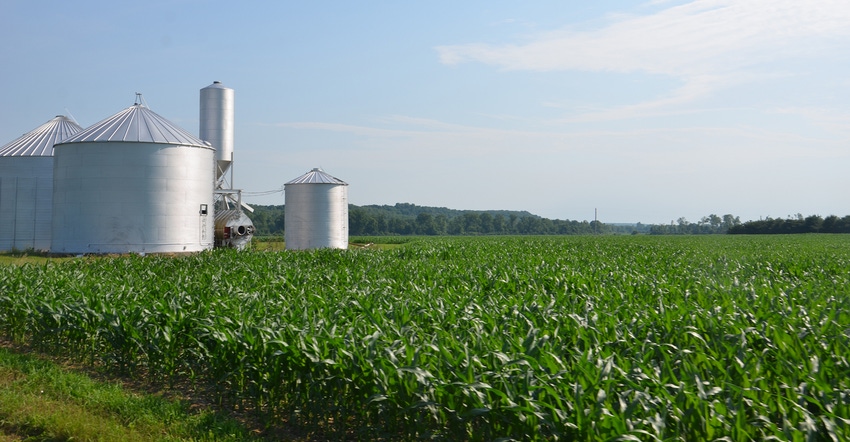July 9, 2018

Crops in Indiana and across the Midwest haven’t looked as good during the first half of the season as they did this year many times since 1986. That sets the stage for top yields but leaves questions unanswered about crop price prospects.
That was the message Purdue University Extension agricultural economist Chris Hurt brought to farmers during the Indiana Farm Management Tour stop at Fisher Farms near Shelbyville, Ind. Tour participants enjoyed a fried chicken lunch from the Kopper Kettle Inn Restaurant, a famous restaurant in Morristown, before Hurt delivered the outlook. His first task was making sure people knew the lunch wasn’t free — ag sponsors provided it. He soon made it clear there will be no free lunch when it comes to crop marketing, either. If the weather continues to be favorable, the price to pay could be lower crop prices.
“There are two major keys when looking at price prospects for this crop,” Hurt said. “Weather is one, and tariff talks are the other.”
Weather impact
Everyone knows weather can be a wild card every year. “It has certainly been beneficial for crops so far, but it’s early,” Hurt said. The critical period for corn comes through early August and runs into September for soybeans.
Near the end of June, Hurt’s crop model put yields at 179 to 180 bushels per acre for corn, above the trend yield of 174 bushels. Using 179 bushels, Hurt said that could result in a carryover of 1.9 billion to 2 billion bushels of corn. USDA projected the December futures price at $3.90, based on trend yield. The extra corn due to good weather could drop the price to about $3.70, off 20 cents per bushel, he noted.
For soybeans, Hurt’s model near the end of June projected 50 bushels per acre, above the trend yield of 48.5 bushels. If it rains at key times during the reproduction period, the carryout could be 500 million bushels. That could result in a price around $9.40 per bushel.
All bets are not over on weather, however. It’s not over until the fat lady sings, or in this case, until the crop is in the grain tank. Mother Nature can throw in monkey wrenches along the way. Stay tuned.
Tariff factor
The bigger implications, should other countries put tariffs on U.S. ag goods, are for soybeans, Hurt said. That’s because a significantly large amount of U.S. soybeans is exported, and a sizable share of those go to China. It’s one of the countries that appears ready to impose 25% tariffs if the Trump administration continues its stance imposing tariffs on Chinese goods coming to the U.S.
“As long as they keep talking, there’s still a chance of avoiding this hit on the 2018 soybean crop,” Hurt said. “However, if it materializes, it could be a major hit.”
Hurt estimated tariffs could lower U.S. soybean prices to farmers by 55 to 60 cents per bushel. If good weather continues and $9.40 is realistic based on weather alone, and tariffs take hold too, the price could be around $8.80 for November soybeans. Tariffs might drop corn another dime, Hurt projected — far short of the potential impact on soybeans.
Again, it’s a “stay-tuned” situation, he advised. Both weather and trade talks are volatile, especially this year.
You May Also Like




